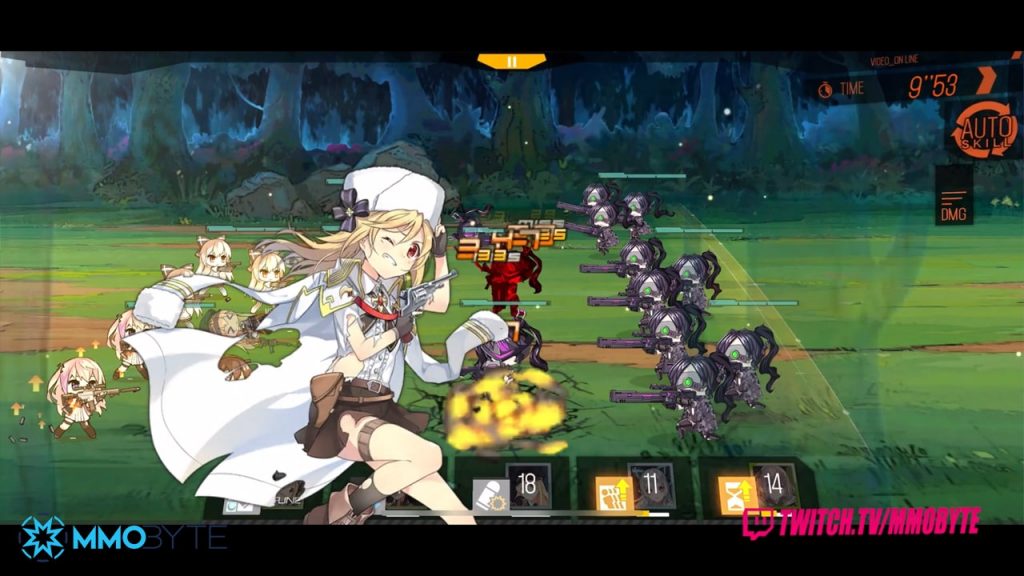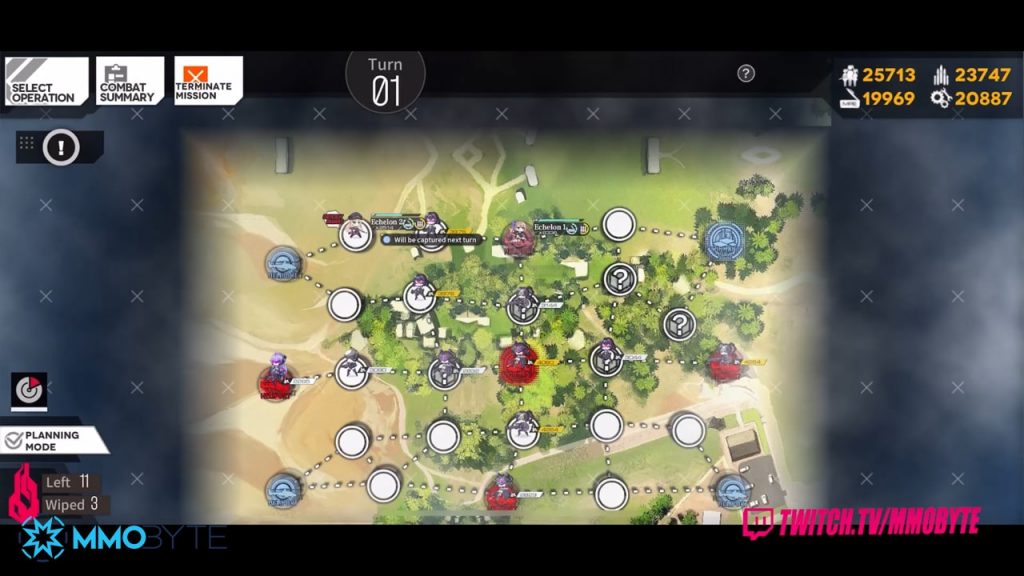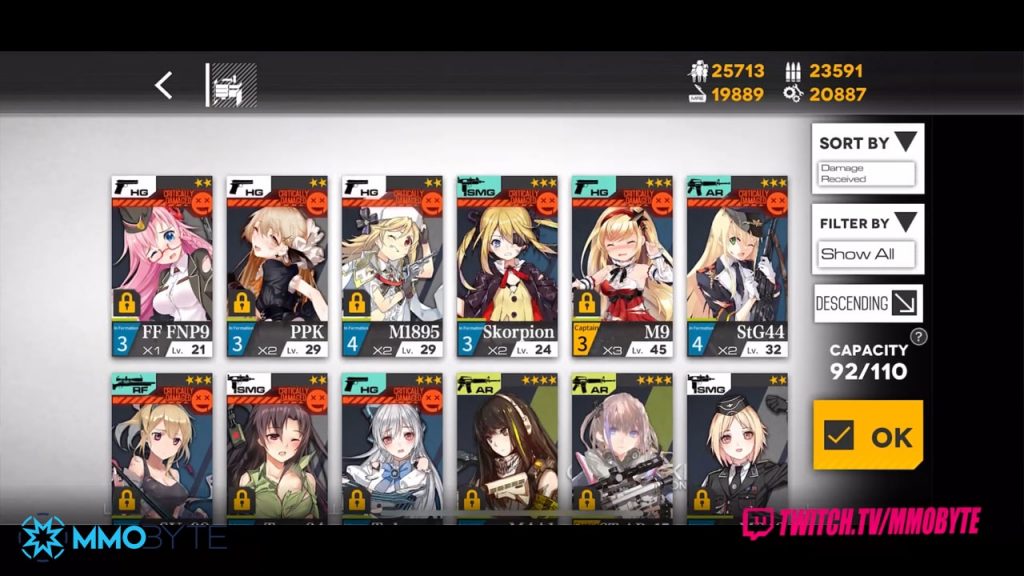Worst Gacha Ever | Episode 6 - Girls' Frontline
I’ll admit, I honestly didn’t expect the level of difficulty I’ve gotten out of Girls’ Frontline. I’d anticipated it being something akin to Azur Lane – with all of the comparisons I’ve seen made between them.
On the contrary, I feel as though with the exception of a few similar features, this is such a contrasting departure from Azur Lane. Which I feel is a good thing, as it helps set it apart as opposed to being a “clone of,” and subsequently living in the shadow of a game much more popular.
But just because it’s more difficult, just because it’s different doesn’t mean it’s better.
Hey, my name is Stix and welcome to another episode of “Worst Gacha Ever.” A video series where we play through every single Gacha game and proceed to analyze what the game does right.. and what it does wrong, based off of my experiences within it over a period of time.
Upon first inspection, I was under the impression that Girls’ Frontline shared quite a few similarities with Azur Lane. It just felt a little more dated, and with a lot less appealing Waifu’s.
For reference, Girls’ Frontline was released in 2016, and Azur Lane in 2017. But after putting 2-3 hours into the game, I quickly came to realize that that assumption was very, very wrong.
I’ve been playing Girls’ Frontline for the last 2 weeks now, and I can say with 100% certainty that this is easily the most difficult Gacha game I’ve ever played.
Not only are the systems a little more complex than I had imagined they’d be, but every single battle consists of enemies that are just so much more powerful than I seem to be, regardless of whether or not I significantly over level and over power them.
As an example, Chapter 5, Episode 4: Safeguard Retreat. This has a recommended strength of 7,000, with enemies ranging from 2,200 to 4,400 strength themselves. Which realistically shouldn’t be an issue, given my most powerful unit has a combat effectiveness of 6,800.
Yet after 3 skirmishes with the enemy, half my team is either approaching withdrawal, or already abandoned the encounter. Deploying other units that I’ve been working on aren’t much help because they’re drastically inferior in terms of power to my main.
Given I’ve been pouring every resource I have into my main team meant that I didn’t have much in the way left to boost other units.
And don’t get me wrong: I was making sure to enhance my characters, upgrade skills, utilize the Dummy Link, level them, but at no point after Chapter 3 did the game ever feel easy enough to fully clear it with an S rating without the use of other players’ units.
I know you’re sitting there thinking “is Stix complaining about the game being too hard?” or “I can’t believe he missed utilizing x feature,” when the reality is: I’m not complaining at all. I actually found the stark contrast in difficulty highly refreshing. It wasn’t as simple as auto-battling, auto-playing through the game with relative ease.
And honestly? I probably did miss a feature or two that could’ve boosted my characters a little. But even the utilization of friends’ units – with heroes that were level 80 in Chapter 5 left them damaged at times. Which goes to show how truly difficult and unforgiving this game is.
So, Girls’ Frontline is an Anime strategy RPG. Players control echelons of android characters known as T-Dolls.
Each Doll falls under one of several different class archetypes: We have Handgun users, Submachine gun users, Shotgun users, Assault Rifle users, Rifle users and Machine Gun users. Each archetype has their own advantages and disadvantages.
As an example: Handgun users have some of the worst base HP of any Doll, as opposed to Submachine Gun users who have fantastic HP. Both happen to have terrible damage, unfortunately.
As opposed to the Rifle or Machine Gun which both excel in damage, but fail in almost everything else, such as Accuracy, Evasion, Fire rate.
Each archetype also has the option of providing beneficial buffs to your team. Handguns boost all T-Doll types. Submachine Guns boost Assault Rifles, with Assault Rifles boosting Submachine Guns, Rifles boost Handguns, Machine Guns boost Shotguns, with Shotguns boosting Machine Guns.
Finally, your Formation plays a vital role in your overall survivability. Which I learned the hard way. Dolls placed in the very far right column are going to be targeted more frequently than any other space, so in an ideal world, you’d keep Handgun units far from the front lines.
This provides a lot of unique opportunities to create interesting team compositions based around a singular type of gameplay.

Since we’ve already delved into what T-Dolls are and how they function, let’s talk about how we play with them. Wait, no. How we use them to–wait, okay. Uh, hmm. However I say this, continues to just sound so wrong.
So the game primarily focuses around the narrative: a metric ton of Chapters, each with their own story, their own characters, their own environments.
Each Chapter has various different Missions, and each Mission takes the form of a singular map, with a Command Post to deploy your main unit, and various Heliports to deploy additional units. Whether those units are alternative Echelons you’ve been slowly building up, or backups from friends.
After deploying your units, you move around a grid – horizontally, vertically, diagonally. You have a limited number of spaces you can move per turn, and can capture one single node per unit per turn. The enemies move in much the same way: A single node per turn, and whatever node they land on, they occupy.
Unless you possess a unit on that node yourself, or circle the node. To capture a node, you need to have already captured an adjacent node, with the exception of the enemy Command Post. All you need to do to capture an enemy Command Post is to land a unit on it and end the turn.
And that wins you the Mission. Each Mission has several Grading conditions that need to be met: Bronze Medals, which involved just capturing the Command Post. Silver Medals, which consist of capturing all nodes on the map. And Gold Medals, which involved eliminating x targets in y number of turns.
Accomplishing all 3 medals allows you to unlock Auto-combat, which allows you to deploy your units automatically, accumulating a large amount of XP, Dolls and other goodies.
Additionally, clearing each Chapter unlocks more difficult.. er, well, difficulties. Normal completion unlocks Emergency, and then there are Night Battles.
The combat itself is automatic. You deploy your units, you select where you want them to go, and then you watch them unload everything onto enemy units. Hoping for the best.
As noted earlier, the Chapters escalate from being really easy, to incredibly difficult very quickly.
And if you’re like me, and have no idea what you’re doing at the time, randomly using all your resources to attempt to farm levels, wasting all your Dummy Cores on linking 5* T-Dolls only to realize you have a very limited number of Cores at your disposal.. then you’ll find yourself in quite the pickle.
Which left me having to use real money to acquire additional resources and try to get a little ahead. Sure, I made use of Logistic Support as often as I could, but realistically that only allows for so much when you’re burning through as much as I was on auto-battles.
Which–okay, wait. So, there is a narrative present in the game. A story that pushes the game forward; that provides meaning and purpose for you, your Dolls. That is the focus of the game.
But there’s so much more than just the main story, even though that’s what I spent most my time trying to slowly make my way through, amongst attempting to and failing to micromanage my resources.

Let’s just work our way down the menu that we can see on-screen.
We have our Base. The base provides us access to the Intelligence Center, Garage, Fairy Chamber, and Protocol Control Center, which are all locked at present.
The Data Room, which functions as a means with which to manage EXP gained from battle and convert it.
The Forward Basecamp, which allows you to send Dolls out on expeditions.
The Rescue Station, an area where Dolls can look after various different stray animals you come across.
The Cafe, which is a place to just.. chill. To participate in some cool little side-activities that have no real affect on the game otherwise.
And finally the Dormitory itself, where your Dolls live. Admittedly, I haven’t really done anything with this. All my Waifu’s are just kinda co-existing there, on some boxes. I like to think of myself as a minimalist. Well, that and Mrs Stix never fixed up my room. So if you’re gonna blame anyone, blame her.
That’s it for the Base. Next we have the Research tab. Where you can upgrade skills of your various T-Dolls. And…. admittedly a few other things that I still haven’t unlocked.
And, I know. I know. “Stix, if you unlocked those you might’ve been more powerful and had less trouble with-” I know. But, honestly, engaging in every gameplay mode I could never unlocked any of those, and with my limited time, I didn’t want to seek out exactly how to go about unlocking them.
Plus, at the time, I was playing through Artery Gear: Fusion which was a lot more fun for me. So I had to split my time, and that took precedence.
Then we have the Factory. You can create T-Dolls here, which use a variety of resources. So be careful. This was one of the ways I found I was most quickly draining my resources early-game, and wished I’d know how difficult resources were to replenish in the short-term.
Next we have the Dummy Link, which functions as a means with which to increase the stats of your Dolls exponentially. These either cost duplicate Dolls, or use Dummy Cores, getting increasingly more expensive per upgrade, but also being an absolute necessity for your characters’ survival.
Then we have the T-Doll Enhancement, allowing us to sacrifice our Dolls to power up our more important ones. Just don’t tell them why we’re actually sacrificing them, otherwise we might start some kinda revolt.
Retirement Disassembly should be relatively self-explanatory.
Equipment Production functions just like the creation of our Dolls. Instead of creating Dolls, however, we create gear. Which half the time we can’t equip because of RNG constantly producing gear for units you don’t have in your core group.
Dolls can equip gear that are specific to their class archetype in the form of Accessories, Magazines, and.. something else once you unlock at level 80. Which unfortunately, I haven’t reached yet.
There’s the Repair Station, which is important as your units don’t automatically heal themselves after battle. Rather, they take mass damage, and then just run away.
Oh, speaking of, one of the best parts about Girls’ Frontline? As your units continue to take damage, their gear continues to break down, revealing.. well, an interesting design choice.
Rarely do units possess 2 separate models – 1 for when they’re full HP, and 1 for when they’re damaged, but here we are. And it’s absolutely fantastic. I feel like, at times, it’s almost not worth repairing them.
And then I remember how difficult the game is.
Then we have Combat. Combat Missions function as the main game mode – this is where Chapters and Missions are located. There are countless Chapters to slowly progress through, and a number of Missions for each Chapter. These get alarmingly more difficult after Chapter 3, so prepare wisely!
Then we have Logistic Support. These allow you to deploy units on support missions, rewarding players resources to actually continue playing. Chapters are unlocked as you unlock them via Combat Missions.
Combat Simulation provides alternate game modes that consume Sim Energy to play through. These are very different, with completely separate objectives to what is normally found within Combat Missions.
And then we have Campaign Missions. Suffice it to say, all of these function the same: They’re all a single map with a group of enemies you need to overcome. Just with different objectives, different rewards, and different requirements.

Naturally, there are Event Stages, Event rewards, the Cash Shop. Which, admittedly, seems pretty fair. Browsing through I didn’t come across anything that didn’t provide, at best, a quality of life improvement.
One thing I was very pleased with though, and this is something that I haven’t touched on yet is the Gacha system. I noted above that you could produce T-Dolls, and that T-Doll and equipment production costs in-game resources.
What this means is that there is no premium currency required to pull for Waifu’s. Every Waifu is recruited purely in-game, with farmable resources being the only thing necessary to obtain them. And the rates aren’t bad. 2* Dolls have a 60% rate, 3* Dolls have a 27% rate, 4* Dolls have a 10% rate, and 5* Dolls have a 3% rate.
Given you can essentially recruit Dolls indefinitely without limitation – other than the resources you have available to you, I feel like this is more fair than what is present in most Gacha games, requiring you potentially spend hundreds, if not thousands of dollars to acquire the Husbando or Waifu you’ve been waiting for.
And then to upgrade them, you need dupes. Which means tens of thousands of dollars, or waiting for a re-roll banner in a year or two.
Overall, there is quite an overwhelming number of things to do in Girls’ Frontline. There was quite a bit more than what I had unlocked at the time I was through playing it.
And while some of the game most definitely feels unintuitive and much more dated when compared to Gacha games released in 2022, I found the difficulty, the depth of various class archetypes and the fairness of its Gacha system to definitely set this quite a bit above most Mobile games I’ve played over the last several years.
Sure, it felt like it took a little longer having to manually navigate maps with my units, but I’ve never been against actually being required to physically play the game I have in my hands.
So while auto-play wasn’t really very prevalent in the game, I feel that is, for the most part, a positive. Much like in Azur Lane.
It’s refreshing to be able to pull for Waifu’s without a premium currency, and be given the opportunity to play through Chapters and Missions without stamina, as entry was limited only by the resources you had at your disposal.
Don’t get me wrong, the lack of explanation, and overwhelming number of features definitely left me feeling like an idiot, even after I was done playing it. And I know many of you are going to complain I forgot x feature or y mechanic down in the comments below.
But I feel like from a casual perspective, this is a very difficult game to get into!
Is Girls’ Frontline the worst Gacha game of 2022? Not at all. It’s definitely not as aesthetically appealing as many of its competitors. It’s overflowing with features that you have to micromanage, and the difficulty is unparalleled.
But it offers players a unique, manual experience, filled with fair Gacha, a decent narrative, a lot of opportunities to roll for Waifu’s and gear. You couldn’t ask for more.












